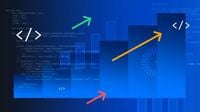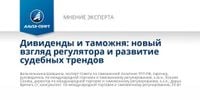As the technology sector continues to expand its footprint in Russia's economy, the Ministry of Digital Development recently reported that in 2024, the IT industry contributed 2.4% to the nation's GDP, marking a 0.3% rise from the previous year. This growth in the IT sector, fueled in part by domestic software development, indicates a significant shift in the landscape of digital solutions within the country.
The increase in homegrown software is notable. Products registered in the Unified Register of Russian Software surged by 22.4% in 2024, surpassing 25,000 entries. This reflects the ongoing trend of import substitution that began in the 2010s but gained momentum after the onset of global sanctions in 2022. With the official ban on foreign software acquisition for government entities—effective January 2025—domestic software developers are being pushed to the forefront of a changing market.
Kyrill Alifanov, the IT director at Sheremetyevo Airport, shared insights into this shift. In December 2024, only five of the 25 Russian government companies had fully transitioned to domestic software in critical infrastructure facilities. As the first half of 2025 approaches, estimates suggest that another 10-15% of these companies are expected to complete their transition. “The focus will now turn to creating bespoke solutions for systems that currently lack domestic counterparts,” Alifanov remarked.
In line with this push for domestic capabilities, new regulations introduced by the Ministry of Digital Development will require that new software solutions be compatible with at least two Russian operating systems. These measures will evolve gradually, commencing from June 2025, emphasizing virtualization, office software, and other categories in subsequent phases.
As the government redefines its approach to supporting the IT industry, significant changes in taxation will take effect starting in 2025. The income tax rate for IT firms will drop to 5% and remain so until 2030, according to Federal Law No. 176-FZ, passed on July 12, 2024. Furthermore, the zero VAT rate for IT companies will persist until the end of 2025, enhancing the attractiveness of domestic software development.
However, maintaining the momentum of domestic software development comes with challenges. Martin Sigutkin, head of application support at SIGMA, commented on the difficulty foreign companies would face if they choose to return. “The likelihood of their success hinges on the market’s responsiveness to alternative solutions that are rapidly improving in stability and functionality. Any returning firms must now contend with a very different market landscape compared to the 1990s,” he stated.
As for cybersecurity, the situation has grown increasingly dire. Reports indicate that in 2024, incidents related to information security surged 2.5 times compared to the previous year, totaling nearly 130,000. Additionally, the number of phishing resources rose by 28%, reflecting a troubling trend toward more sophisticated cyber threats. This increase is directly correlated with the shift to domestic IT solutions, which often lack extensive vulnerability assessments. “We're witnessing a notable uptick in targeted attacks, and organizations are realizing the urgent need for robust data protection,” noted cybersecurity experts from Cyberprotekt.
As the digital landscape grows more volatile, a concurrent government initiative was launched emphasizing the role of cybersecurity in maintaining public safety and technological integrity. The National System for Countering DDoS Attacks was established, demonstrating a commitment to enhancing the security infrastructure within Russia.
With the rise of the Internet of Things (IoT), there is significant anticipated growth in this sector, especially in areas such as smart city development, which experts project could lead to a 10-15% increase in demand for energy-efficient technologies by the end of 2025. However, the rate of adoption will largely depend on governmental support and domestic production capabilities.
The incorporation of artificial intelligence (AI) technologies is also on the rise. Experts predict that by 2025, between 60-70% of Russian companies will utilize AI-driven solutions. This shift already appears evident in sectors like banking and retail, pointing to a broader integration of AI across industries. “AI is fundamentally changing the landscape, particularly as solutions become more accessible and less costly,” stated Vladimir Gusev, SIGMA’s sales director.
Despite these promising indicators, the IT market faced considerable challenges in 2024. Revenues from large companies fell short of expectations, with year-over-year growth ranging from 5 to 20%. Factors contributing to this slowdown include heightened interest rates that impacted buyer behavior in the latter half of the year. The period marked by explosive growth following the exit of foreign vendors appears to stabilize, though stakeholders remain hopeful for continued positive trends in the medium term.
With an evolving tax landscape, experts warn of potential challenges ahead in 2025. The risk of raised benchmark rates is expected to impact firms’ capacities to sustain operations effectively, especially as rising costs may necessitate adjustments in pricing strategies.
Looking towards 2025, industry leaders anticipate a pronounced focus on AI technologies. Low-code and no-code solutions are expected to become prominent, making AI-oriented developments more feasible even for companies far from the IT sector. “A surge in confidence in domestic IT systems is evidenced by 80% of surveyed companies trusting domestic software more over the last two years,” observed industry analysts from Arenadata.
While the road ahead poses both obstacles and opportunities, the strategic alignment of IT investments with corporate goals appears critical. Ensuring robust cybersecurity measures remains paramount as threats evolve and grow. Collaborative efforts between the government, businesses, and cybersecurity sectors will inevitably serve as the backbone for enhancing overall resilience in the Russian IT ecosystem.






